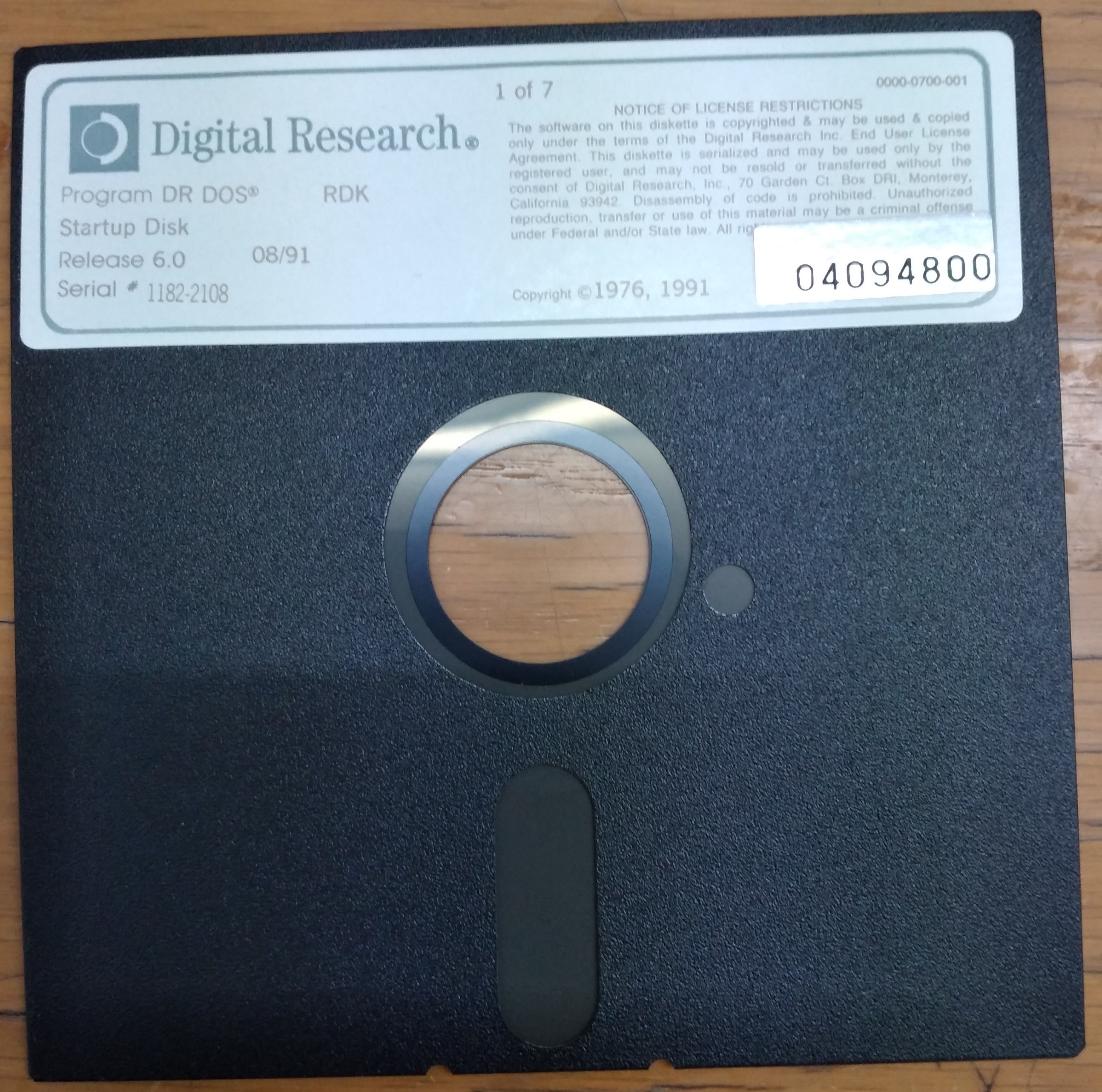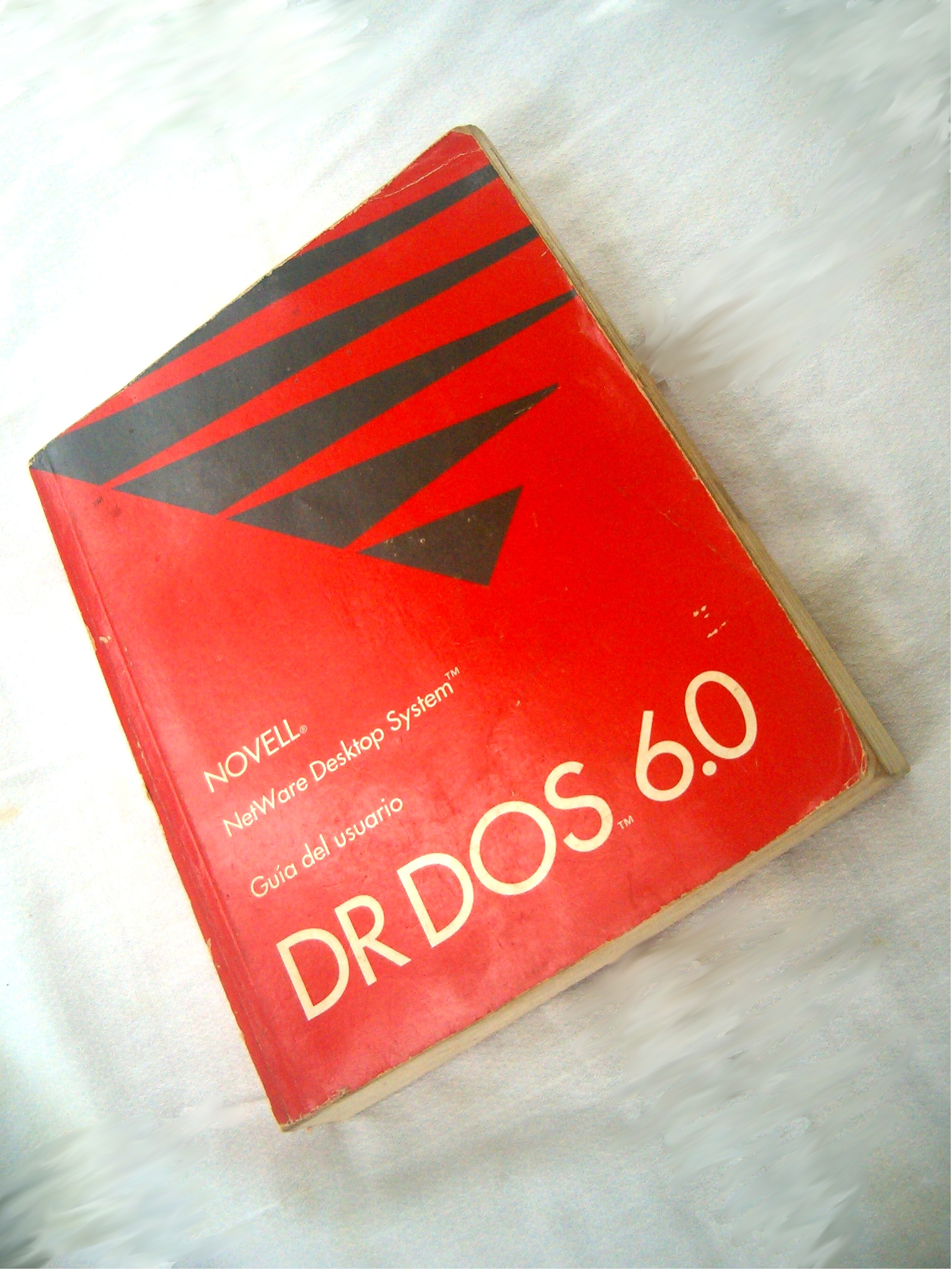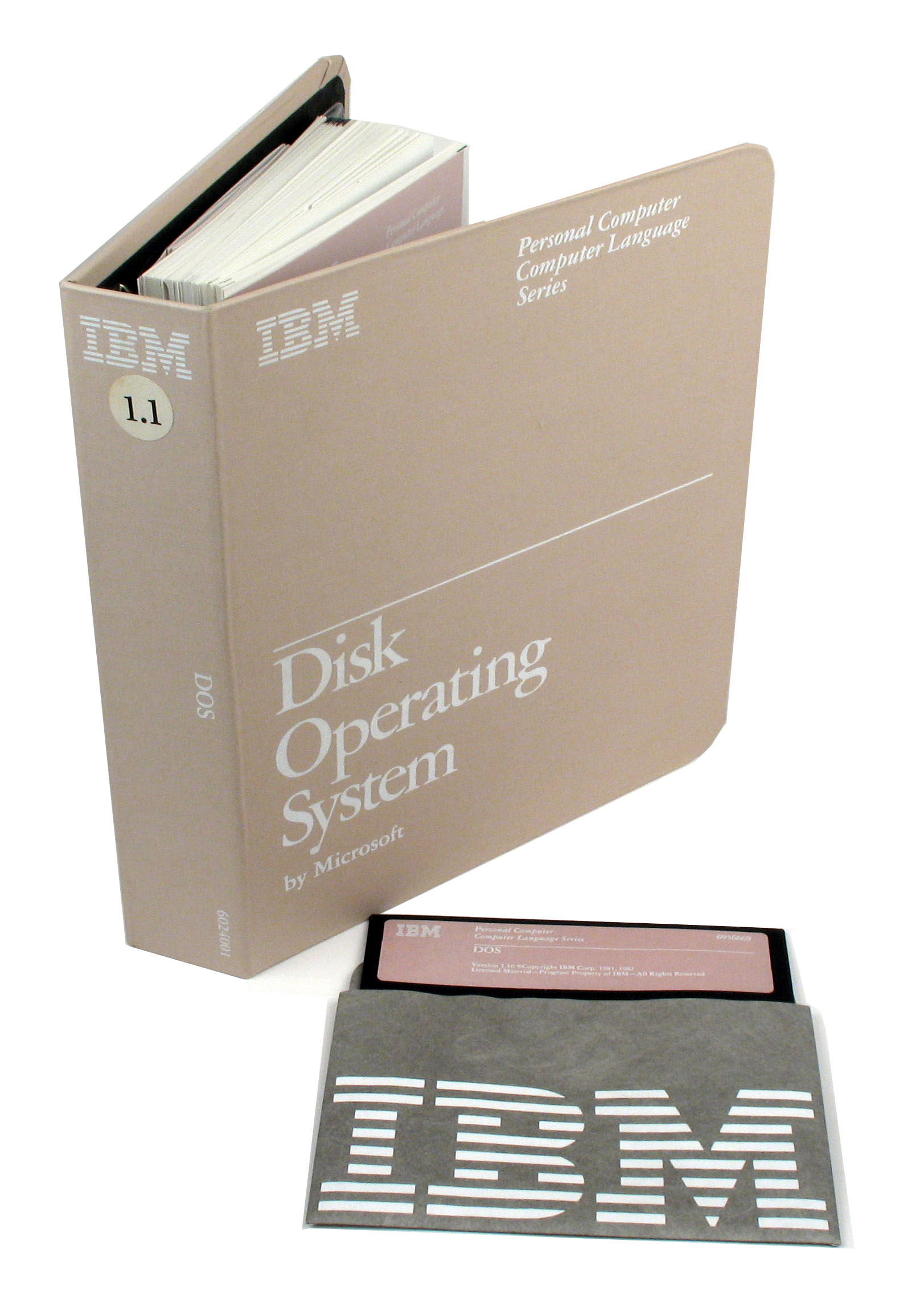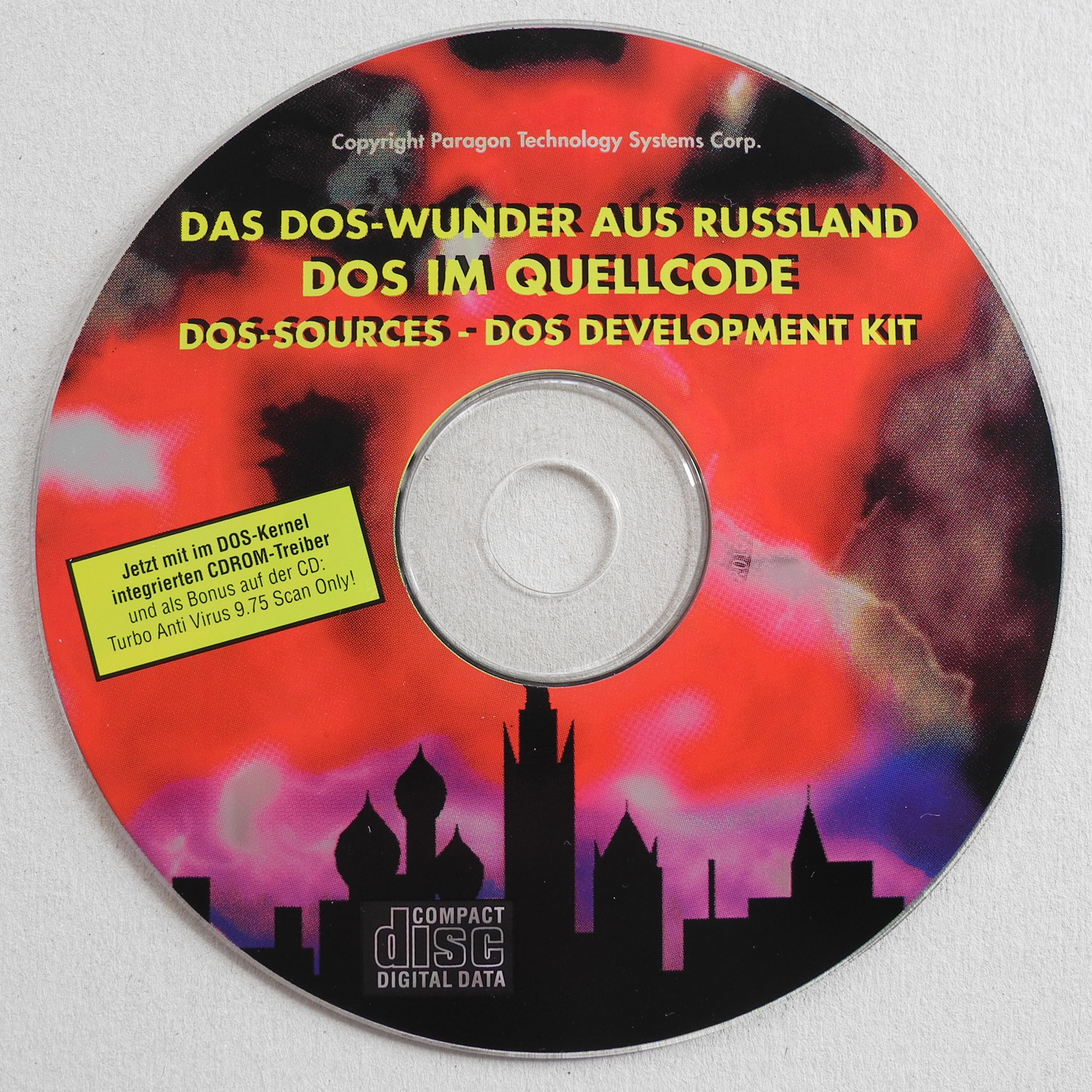|
DOS 7 (other)
DOS 7 or DOS-7 may refer to: * Mir Core Module aka DOS-7, Russian spacecraft It may also refer to versions of the DR-DOS family: * Novell DOS 7, successor of Digital Research's DR DOS 6.0 and NetWare PalmDOS 1.0 in 1993 * OpenDOS 7.01, successor of Novell DOS 7 by Caldera in 1997 * DR-OpenDOS 7.02, successor of OpenDOS 7.01 by Caldera in 1997 * DR-DOS 7.02, successor of DR-OpenDOS 7.02 by Caldera in 1998 *DR-DOS 7.03, successor of DR-DOS 7.02 by Caldera in 1999 * DR-DOS 7.04, LBA/FAT32-enabled OEM version of DR-DOS *DR-DOS 7.05, LBA/FAT32-enabled OEM version and successor of DR-DOS 7.04 * DR-DOS 7.06, LBA/FAT32-enabled OEM version of DR-DOS *DR-DOS 7.07, LBA/FAT32-enabled OEM version of DR-DOS It may also refer to versions of the Microsoft MS-DOS family: *MS-DOS 7.0, LBA-enabled DOS component bundled with Windows 95 in 1995 *MS-DOS 7.1, LBA/FAT32-enabled DOS component bundled with Windows 98/98 SE in 1998/1999 It may also refer to versions of the IBM PC DOS family: *PC DOS 7, suc ... [...More Info...] [...Related Items...] OR: [Wikipedia] [Google] [Baidu] |
Mir Core Module
''Mir'' (russian: Мир lit. ''Peace'' or ''World''), DOS-7, was the first module of the Soviet/Russian ''Mir'' space station complex, in low Earth orbit from 1986 to 2001. Generally referred to as either the core module or base block, the module was launched on 20 February 1986 on a Proton-K rocket from LC-200/39 at the Baikonur Cosmodrome. The spacecraft was generally similar in design to the two previous Soviet orbital stations, Salyut 6 and Salyut 7, however possessed a revolutionary addition in the form of a multiple docking node at the forward end of the module. This, in addition to the docking port at the rear of the spacecraft, allowed five additional modules ( ''Kvant''-1 (1987), ''Kvant''-2 (1989), ''Kristall'' (1990), ''Spektr'' (1995) and ''Priroda'' (1996)) to be docked directly to DOS-7, greatly expanding the station's capabilities. Designed as a 'habitat' or 'living' module, DOS-7 possessed less scientific apparatus than its predecessors (lacking, for ... [...More Info...] [...Related Items...] OR: [Wikipedia] [Google] [Baidu] |
Novell DOS 7
DR-DOS (written as DR DOS, without a hyphen, in versions up to and including 6.0) is a disk operating system for IBM PC compatibles. Upon its introduction in 1988, it was the first DOS attempting to be compatible with IBM PC DOS and MS-DOS (which were the same product sold under different names). DR-DOS was developed by Gary A. Kildall's Digital Research and derived from Concurrent PC DOS 6.0, which was an advanced successor of CP/M-86. As ownership changed, various later versions were produced with names including Novell DOS and Caldera OpenDOS. History Origins in CP/M Digital Research's original CP/M for the 8-bit Intel 8080- and Z-80-based systems spawned numerous spin-off versions, most notably CP/M-86 for the Intel 8086/8088 family of processors. Although CP/M had dominated the market since the mid-1970s, and was shipped with the vast majority of non-proprietary-architecture personal computers, the IBM PC in 1981 brought the beginning of what was eventually ... [...More Info...] [...Related Items...] OR: [Wikipedia] [Google] [Baidu] |
OpenDOS 7
DR-DOS (written as DR DOS, without a hyphen, in versions up to and including 6.0) is a disk operating system for IBM PC compatibles. Upon its introduction in 1988, it was the first DOS attempting to be compatible with IBM PC DOS and MS-DOS (which were the same product sold under different names). DR-DOS was developed by Gary A. Kildall's Digital Research and derived from Concurrent PC DOS 6.0, which was an advanced successor of CP/M-86. As ownership changed, various later versions were produced with names including Novell DOS and Caldera OpenDOS. History Origins in CP/M Digital Research's original CP/M for the 8-bit Intel 8080- and Z-80-based systems spawned numerous spin-off versions, most notably CP/M-86 for the Intel 8086/8088 family of processors. Although CP/M had dominated the market since the mid-1970s, and was shipped with the vast majority of non-proprietary-architecture personal computers, the IBM PC in 1981 brought the beginning of what was eventually to ... [...More Info...] [...Related Items...] OR: [Wikipedia] [Google] [Baidu] |
DR-OpenDOS 7
DR-DOS (written as DR DOS, without a hyphen, in versions up to and including 6.0) is a disk operating system for IBM PC compatibles. Upon its introduction in 1988, it was the first DOS attempting to be compatible with IBM PC DOS and MS-DOS (which were the same product sold under different names). DR-DOS was developed by Gary A. Kildall's Digital Research and derived from Concurrent PC DOS 6.0, which was an advanced successor of CP/M-86. As ownership changed, various later versions were produced with names including Novell DOS and Caldera OpenDOS. History Origins in CP/M Digital Research's original CP/M for the 8-bit Intel 8080- and Z-80-based systems spawned numerous spin-off versions, most notably CP/M-86 for the Intel 8086/ 8088 family of processors. Although CP/M had dominated the market since the mid-1970s, and was shipped with the vast majority of non-proprietary-architecture personal computers, the IBM PC in 1981 brought the beginning of what was eventually ... [...More Info...] [...Related Items...] OR: [Wikipedia] [Google] [Baidu] |
DR-DOS 7
DR-DOS (written as DR DOS, without a hyphen, in versions up to and including 6.0) is a disk operating system for IBM PC compatibles. Upon its introduction in 1988, it was the first DOS attempting to be compatible with IBM PC DOS and MS-DOS (which were the same product sold under different names). DR-DOS was developed by Gary A. Kildall's Digital Research and derived from Concurrent PC DOS 6.0, which was an advanced successor of CP/M-86. As ownership changed, various later versions were produced with names including Novell DOS and Caldera OpenDOS. History Origins in CP/M Digital Research's original CP/M for the 8-bit Intel 8080- and Z-80-based systems spawned numerous spin-off versions, most notably CP/M-86 for the Intel 8086/8088 family of processors. Although CP/M had dominated the market since the mid-1970s, and was shipped with the vast majority of non-proprietary-architecture personal computers, the IBM PC in 1981 brought the beginning of what was eventually to ... [...More Info...] [...Related Items...] OR: [Wikipedia] [Google] [Baidu] |
MS-DOS 7
MS-DOS 7 is a real mode operating system for IBM PC compatibles. Unlike earlier versions of MS-DOS it was not released separately by Microsoft, but included in the Windows 9x family of operating systems. Windows 95 RTM reports to be MS-DOS 7.0, while Windows 95 OSR 2.x and Windows 98 report as 7.1. Windows 9x runs under DOS similar to Windows 3.1x, and while according to Microsoft the role of MS-DOS was reduced to a boot loader and acted as the 16-bit legacy device driver layer, it has been stated that there is almost no difference in the relationship between Windows 9x and its included MS-DOS 7.x and Windows 3.x and MS-DOS 6.x. New features As the first version in the series, MS-DOS 7.0 added support for long filename (LFN) awareness, and its DIR command for example will show them with an LFN driver such as DOSLFN (earlier versions of MS-DOS wouldn’t show long filenames even with such a driver). It also supports for larger extended memory (up to 4GB) via its HIMEM.SYS driver. V ... [...More Info...] [...Related Items...] OR: [Wikipedia] [Google] [Baidu] |
PC DOS 7
IBM PC DOS, an acronym for IBM Personal Computer Disk Operating System, is a discontinued disk operating system for IBM PC compatibles. It was manufactured and sold by IBM from the early 1980s into the 2000s. Developed by Microsoft, it was also sold by that company as MS-DOS. Both operating systems were identical or almost identical until 1993, when IBM began selling PC DOS 6.1 with new features. The collective shorthand for PC DOS and MS-DOS was DOS, which is also the generic term for disk operating system, and is shared with dozens of disk operating systems called DOS. History The IBM task force assembled to develop the IBM PC decided that critical components of the machine, including the operating system, would come from outside vendors. This radical break from company tradition of in-house development was one of the key decisions that made the IBM PC an industry standard. Microsoft, founded five years earlier by Bill Gates, was eventually selected for the operating system. ... [...More Info...] [...Related Items...] OR: [Wikipedia] [Google] [Baidu] |
PC DOS 2000
IBM PC DOS, an acronym for IBM Personal Computer Disk Operating System, is a discontinued disk operating system for IBM PC compatibles. It was manufactured and sold by IBM from the early 1980s into the 2000s. Developed by Microsoft, it was also sold by that company as MS-DOS. Both operating systems were identical or almost identical until 1993, when IBM began selling PC DOS 6.1 with new features. The collective shorthand for PC DOS and MS-DOS was DOS, which is also the generic term for disk operating system, and is shared with dozens of disk operating systems called DOS. History The IBM task force assembled to develop the IBM PC decided that critical components of the machine, including the operating system, would come from outside vendors. This radical break from company tradition of in-house development was one of the key decisions that made the IBM PC an industry standard. Microsoft, founded five years earlier by Bill Gates, was eventually selected for the operating s ... [...More Info...] [...Related Items...] OR: [Wikipedia] [Google] [Baidu] |
PTS-DOS 7
PTS-DOS (aka PTS/DOS) is a disk operating system, a DOS clone, developed in Russia by PhysTechSoft and Paragon Technology Systems. History and versions PhysTechSoft was formed in 1991 in Moscow, Russia by graduates and members of MIPT, informally known as PhysTech. At the end of 1993, PhysTechSoft released the first commercially available PTS-DOS as PTS-DOS v6.4. The version numbering followed MS-DOS version numbers, as Microsoft released MS-DOS 6.2 in November 1993. In 1995, some programmers left PhysTechSoft and founded Paragon Technology Systems. They took source code with them and released their own version named PTS/DOS 6.51CD as well as S/DOS 1.0 ("Source DOS"), a stripped down open-source version. According to official PhysTechSoft announcements, these programmers violated both copyright laws and Russian military laws, as PTS-DOS was developed in close relationship with Russia's military and thus may be subject to military secrets law. PhysTechSof ... [...More Info...] [...Related Items...] OR: [Wikipedia] [Google] [Baidu] |
PTS-DOS 32
PTS-DOS (aka PTS/DOS) is a disk operating system, a DOS clone, developed in Russia by PhysTechSoft and Paragon Technology Systems. History and versions PhysTechSoft was formed in 1991 in Moscow, Russia by graduates and members of MIPT, informally known as PhysTech. At the end of 1993, PhysTechSoft released the first commercially available PTS-DOS as PTS-DOS v6.4. The version numbering followed MS-DOS version numbers, as Microsoft released MS-DOS 6.2 in November 1993. In 1995, some programmers left PhysTechSoft and founded Paragon Technology Systems. They took source code with them and released their own version named PTS/DOS 6.51CD as well as S/DOS 1.0 ("Source DOS"), a stripped down open-source version. According to official PhysTechSoft announcements, these programmers violated both copyright laws and Russian military laws, as PTS-DOS was developed in close relationship with Russia's military and thus may be subject to military secrets law. PhysTechSof ... [...More Info...] [...Related Items...] OR: [Wikipedia] [Google] [Baidu] |
ROM-DOS 7
Datalight was a privately held software company specializing in power failsafe and high performance software for preserving data integrity in embedded systems. The company was founded in 1983 by Roy Sherrill, and is headquartered in Bothell, Washington. As of 2019 the company is a subsidiary of Tuxera under the name of Tuxera US Inc. Overview and history Datalight was founded in 1983 by Roy Sherrill, a former Boeing engineer.100 MB) and large numbers of files. In 2013, another file system related patent, "Method and Apparatus for Fault-tolerant Memory Management" was issued. In June 2019, the Finnish storage software and networking technology company Tuxera signed an agreement to acquire Datalight. Products Reliance family Reliance First released in 2003, Reliance is an embedded file systemMiller, Drew. ''Black Hat Physical Device Security: Exploiting Hardware and Software''p. 49 Syngress, 2004. . designed for applications with high reliability requirements.Relia ... [...More Info...] [...Related Items...] OR: [Wikipedia] [Google] [Baidu] |
DOS 6 (other)
{{Letter-NumberCombDisambig ...
DOS 6 or DOS-6 may refer to: In computing: * DR DOS 6.0 by Novell * MS-DOS 6.x by Microsoft * IBM PC DOS 6.x by IBM *Novell DOS 7, which reports itself as "PC DOS 6.0" * DR-DOS 7.x, which reports itself as "PC DOS 6.0" * ROM-DOS 6.22 by Datalight * Paragon DOS Pro 2000 by PhysTechSoft * PTS-DOS 6.x by PhysTechSoft Others: * DOS-6, Soviet space station Salyut 7 See also * DOS 5 (other) * DOS 7 (other) *DOS (other) DOS is shorthand for the MS-DOS and IBM PC DOS family of operating systems. DOS may also refer to: Computing * Data over signalling (DoS), multiplexing data onto a signalling channel * Denial-of-service attack (DoS), an attack on a communicati ... [...More Info...] [...Related Items...] OR: [Wikipedia] [Google] [Baidu] |





